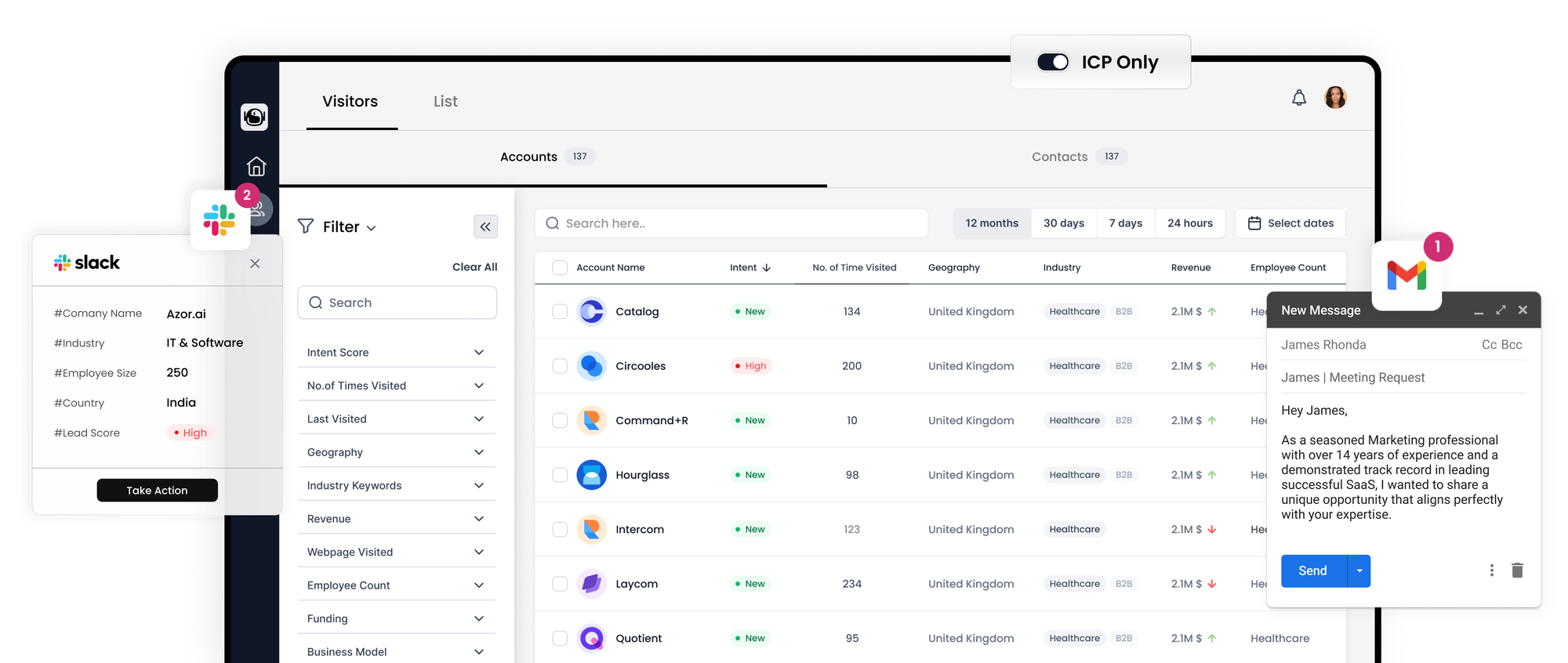Demand Generation Marketing Simplified

Welcome to the quick guide on demand generation marketing! Let's demystify this essential strategy, often misconstrued as merely generating demand for products. Demand generation encompasses a broad spectrum of marketing activities aimed at fostering long-term customer engagement. This includes lead generation, capturing existing demand, and accelerating the sales pipeline.
It's a multifaceted approach involving various touchpoints that not only create brand awareness but also position your company as a reliable authority. This process involves understanding customer challenges and presenting your brand as a solution provider, ultimately leading to brand loyalty.
Demand generation is not a short-term tactic but a comprehensive strategy incorporating inbound marketing, social media engagement, ebooks, newsletters, events, webinars, and more. When executed effectively, it elevates your brand's relevance to your customers' needs, provides sales with valuable leads, and redefines marketing from being a cost factor to a revenue generator.

Breaking Down Demand Generation into Three Core Pillars:
1. Lead Generation
This is the foundational step of demand generation. It's about sparking interest in potential customers and adding them to your database. Through nurturing, these leads can be developed and moved along the sales funnel by your sales development team.
2. Demand Capture
Here, the focus is on harnessing existing market demand to direct potential customers towards your products or services. This is achieved through lower funnel content that clearly defines your brand proposition, like PPC ads, SEO strategies, and leveraging third-party intent data.
3. Pipeline Acceleration
After generating or capturing demand and creating opportunities, the next step is to hasten the sales process. This involves direct engagement with potential customers or crafting content that resonates with their specific challenges and stage in the buying journey. Field marketing events are also a key strategy in pipeline acceleration, providing direct interaction with prospects.
In essence, demand generation is a strategic blend of methods and tactics that not only brings in leads but also nurtures and accelerates them through the sales pipeline, ultimately driving sustainable growth and establishing your brand as a trusted advisor in your industry.
Demand Generation Marketing: A Comprehensive Guide to the Five Stages
Embarking on a demand generation campaign can feel overwhelming, but understanding its stages can streamline the process. Here's an insightful overview of the five crucial components for a successful campaign:
1. Setting Goals
- Start with the End in Mind: Begin by determining your campaign's ultimate objectives. Whether it's booking revenue targets or specific marketing KPIs, these goals will guide the rest of your strategy.
- Work Backward: Knowing your end goals, you can calculate the necessary number of MQLs, SQLs, and opportunities to achieve these targets. This informs the scope and scale of your marketing programs.
2. Identifying Your Audience
- Target with Precision: Knowing your audience is critical. Develop detailed personas based on their roles, needs, and goals.
- Navigate Communication Preferences: In an era where consumers have immense control over the content they receive, understanding and respecting their communication preferences is key.
3. Content Creation
- Tailor Content for the Funnel: Create content that addresses each stage of the buyer's journey.
- Top-of-Funnel: Focus on brand awareness and need identification with insightful thought leadership content.
- Mid-Funnel: Offer educational material like whitepapers or buying guides to aid in problem-solving and decision-making.
- Bottom-of-Funnel: Provide specific company-focused content, like case studies or product demos, to reinforce your value proposition.
4. Content Distribution
- Strategic Delivery: The success of your content also depends on how it's distributed. Employ a mix of channels like email, social media, direct mail, or live events, tailored to different funnel stages.
- Channel Specificity: Use broader channels like social media or display networks at the top of the funnel and more direct methods like paid search or email marketing at the bottom to drive conversions.
5. Performance Measurement
- Measure to Manage: Track your KPIs meticulously to assess the effectiveness of your campaign.
- Holistic Analytics: Include early-stage, mid-stage, and late-stage metrics, covering aspects from program costs to revenue attribution. This helps in presenting a clear picture of ROI and informs future strategies.
In essence, a demand generation campaign is a blend of goal-oriented planning, audience understanding, tailored content creation, strategic distribution, and thorough performance measurement. By focusing on these stages, marketers can not only attract but also nurture and convert leads more effectively, ultimately driving sustainable business growth.
Three Strategies for Effective Demand Generation
Navigating the complexities of demand generation can be challenging, but certain strategies have proven effective in ensuring campaign success. Here are three essential tips to enhance your demand generation efforts:
1. Deliver Exceptional Value to Prospects
- Focus on Quality Offerings: Whether it's through engaging newsletters, insightful eBooks, or compelling product demos, ensure that whatever you offer your audience is of high quality and genuine value.
- Build Lasting Impressions: High-value offerings not only encourage prospects to share their contact details, turning them into viable leads, but they also foster brand recall and loyalty, increasing the likelihood of future engagements.
2. Cultivate Originality in Content Marketing
- Invest in Unique Content: Successful content marketing hinges on two pivotal factors: substantial investment and distinctiveness.
- Stand Out from the Crowd: Avoid rehashing existing content. Instead, enrich your material with unique insights, original research, and expert opinions on new trends. This approach distinguishes your brand and captures audience interest more effectively.
3. Embrace Continuous Experimentation
- Marketing as an Ongoing Experiment: While data analytics offers valuable insights, marketing still contains elements of unpredictability. Understanding your audience's preferences and responses is an ongoing learning process.
- Leverage A/B Testing: Regularly conduct A/B tests to refine your strategies. This method can significantly enhance engagement, amplify campaign effectiveness, and continuously elevate your marketing standards.
Implementing these strategies in your demand generation campaigns can result in more effective audience engagement, stronger brand differentiation, and a better understanding of what resonates with your target market. By consistently delivering value, ensuring originality, and embracing the experimental nature of marketing, you can drive more successful outcomes in your demand generation endeavors.
